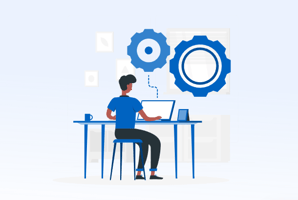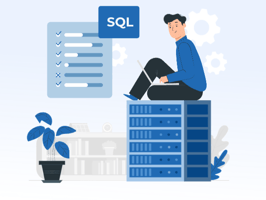Ember.js is a powerful and widely used JavaScript framework for building robust web applications....
ERP Application Development: Streamlining Business Operations for Optimal Efficiency
Introduction
In the fast-paced world of modern business, efficient management of resources and streamlined operations are vital for success. Enterprise Resource Planning (ERP) systems have emerged as indispensable tools, facilitating seamless integration of various business processes, data, and departments. This article explores the significance of ERP application development and its transformative impact on businesses.
- Understanding ERP Application Development
ERP application development involves the creation and customization of software systems designed to centralize and automate core business processes. These systems encompass a wide range of functions, including accounting, human resources, supply chain management, customer relationship management, and more. The primary goal of ERP development is to empower organizations with real-time access to critical data and insights, enabling better decision-making and enhancing overall productivity.
- Benefits of ERP Application Development
2.1. Improved Efficiency and Productivity By automating repetitive tasks and integrating disparate processes, ERP applications minimize manual interventions, leading to enhanced operational efficiency and increased productivity across the organization. Streamlined workflows and data-driven insights enable employees to focus on more strategic tasks, thereby fostering a culture of innovation.
2.2. Enhanced Data Visibility and Reporting ERP systems provide a centralized database, ensuring a single source of truth for all business data. Real-time access to information empowers stakeholders to make informed decisions promptly. Comprehensive reporting and analytics tools offer deeper insights into business performance, helping executives identify trends, opportunities, and potential challenges.
2.3. Better Collaboration and Communication ERP solutions facilitate seamless communication and collaboration among various departments. By breaking down information silos, employees can work together more effectively, promoting cross-functional synergy and fostering a cohesive work environment.
2.4. Scalability and Flexibility As businesses grow, their requirements evolve too. ERP applications are designed to be scalable and flexible, accommodating the changing needs of organizations. Whether it's expanding into new markets, adding more users, or integrating third-party applications, ERP systems can adapt and grow with the business.
- Key Features of ERP Applications
3.1. Integration Capabilities A robust ERP application seamlessly integrates with existing systems and third-party applications, eliminating the need for separate software for different functions. This integration enhances data accuracy, reduces duplication of efforts, and simplifies data management.
3.2. Customization Options Each business has unique processes and requirements. A successful ERP application development includes the option for customization, enabling organizations to tailor the system to their specific needs. Customization ensures that the ERP system aligns perfectly with the business model and maximizes its potential.
3.3. Security and Data Protection Data security is paramount in today's digital landscape. ERP applications employ robust security measures, including data encryption, user authentication, and role-based access controls to safeguard sensitive information from unauthorized access.
3.4. User-Friendly Interface A user-friendly interface is crucial for successful ERP implementation. Intuitive navigation and well-designed interfaces facilitate faster user adoption and reduce the learning curve for employees, ensuring a smooth transition to the new system.
- Best Practices for ERP Application Development
4.1. Comprehensive Requirements Gathering Before commencing development, a thorough analysis of the organization's needs, goals, and existing processes is essential. Gathering comprehensive requirements ensures that the ERP system addresses all critical aspects of the business.
4.2. Agile Development Approach Adopting an agile development approach allows for incremental enhancements and iterative testing throughout the development process. This approach promotes flexibility and quicker response to changing requirements, resulting in a more tailored and effective ERP application.
4.3. Training and Change Management Proper training and change management are vital for successful ERP implementation. Employees need to be well-versed with the new system's features and benefits, and any resistance to change should be addressed proactively.
4.4. Post-Implementation Support and Maintenance ERP application development does not end with implementation. Ongoing support and maintenance are necessary to keep the system running smoothly, address issues promptly, and incorporate updates or new functionalities as needed.
Conclusion
ERP application development has revolutionized the way businesses operate, streamlining processes, and providing a competitive edge in today's dynamic market. By embracing ERP systems, organizations can achieve improved efficiency, better decision-making, and sustainable growth. As technology continues to advance, the future of ERP application development holds even more promising prospects for businesses worldwide.


